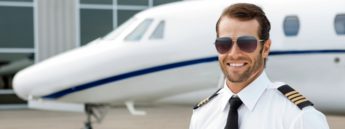Role of Boeing 737 NG Family in the Aviation Market
By the early 1990s, it became clear that the new Airbus A320 was a serious threat to the Boeing’s market share as Airbus have won previously loyal 737 customers such as Lufthansa and United Airlines. In 1993, Boeing’s board of directors authorized the Next Generation program to replace the 737 Classic series.
While the whole world is waiting for successor to the Boeing 737 Next Generation (NG) series Boeing 737 MAX, let’s remember the history of the aircraft development and why NG is still an important piece of machinery in the world of aviation.
Prospects in numbers
“NG”, the ‘next generation’ covers -600 to -900 series of the 737. The total number of 737 NGs ordered was over 7000 before the beginning of 2016. The 737 had an order backlog of 4392 aircraft by the mentioned time. In fact, this number includes more than 3000 orders for the 737 MAX.
The table shows Boeing 737s orders and deliveries by series.
| Model | Total Orders | Total Delivered |
|---|---|---|
| Classics | 1988 | 1988 |
| NG’s | 7033 | 5713 |
| MAX | 3072 | 0 |
| Total: | 12093 | 7701 |
As we can see from the figures, 1320 Boeing 737 NGs are not delivered yet, which means that more than 5000 pilots are still needed to fill the gap in the future crews. These aircraft will create tens of thousands of jobs not only for pilots but also for flight attendants, type rating instructors, ground handling staff and others who work in the field of aviation.
737 Next-Generation customers’ list consist of airlines such as China Airlines, EgyptAir, Malaysia Airlines, NordStar Airlines, Ryanair, United Airlines, Virgin Australia, Aeroflot and many others which comprises a list of almost 200 names. According to Boeing’s official website, main companies which are waiting for deliveries this year are VietJet Air, Easten Air Lines Group, Air China, Arik Air, United Airlines, Xiamen Airlines. Together with unidentified customers they will receive 239 B737 NG’s by the end of the year.
How is Boeing 737 NG different from previous models?
Much of the efficiency spins around the redesigned wing. According to the article by David Parker Brown, NG has 25% more total surface area and potentially 30% more fuel capacity. Its wing is more swept with a constant angle and has double-slotted continuous span flaps. The double swept leading edge is gone as well as characteristic ‘kink’ of the earlier wing. Similarly, there have been changes to the leading and trailing edge flaps that have resulted in weight saving as well as aerodynamic efficiency.
The 737NG’s flight deck strongly resembles its twin-engine big brother Boeing 777. The panel is dominated by the presence of 6 LCD panels arranged side by side, replacing the combination of EFIS and analogue that was found on the Classic. This means a degree of modification of pilots’ instrument scan from the vertical to the horizontal. The climb is not as “sporty” as the classic and speeds are generally faster but the rate of climb is lower. The NG is certified to 41,000′, whereas the classic is limited to 37,000′. The fuel flows are about the same but the NG is more efficient with the higher speeds.
While walking around the NG, there seems to be only subtle visible changes to the original 737 – the prominent winglets. It is longer, wider and has a higher fin than the Classic, however, it is side by side with its ‘parent’ as these differences are all a matter of scale. However, the aircraft does sit higher than its Classic forerunner and consequently allows greater clearance for the CFM56-7 engines that are slung beneath the wings.
Comprised of significantly less parts than the Classic, the NG was also designed with far more ‘ease of accesses’ for maintenance crew. Redesigned leading edges, landing gear, electronics, APU and the 15% more efficient CFM56-7 engines, all lowered the bottom line.
Interesting fact: assembling a 737 is a complex job. Factory employees must take 367,000 parts, an equal number of bolts, rivets and other fasteners, 36 miles (58 kilometers) of electrical wire and put them all together to form an airplane. All these parts become Boeing 737 NG intended for pilots to operate.
From a pilot’s point of view
From a pilot’s perspective the NG is a huge improvement compared with the classic, if we believe those who pilot it. The flight deck was designed in response to the demand by operators. The flight deck is fitted with 6 large screens (DUs): the PFD and ND sit side by side while the engine and systems DU’s are in the middle, one above the other. The lower DU which displays secondary engine information and some system information is customized so variations could be seen in displays here.
The overhead panel looks much the same as in the CL, except for the pressurization panel which is a simpler digital system. Other systems appear the same but there are some huge improvements in the “behind the scenes” architecture, particularly the electronics.
Combining all of the above items, Boeing 737 NG is a great technical achievement to fly, pilot the plane, and carry passengers.
Instead of conclusion
Boeing’s latest B737 NG has already started to dominate the skies, while the ‘Max’ is still yet to come. Till then, market requires a large number of pilots who are able to control the NG type of aircraft. Many aviation training centers offer difference courses for the Boeing 737 types. If you look at and monitor the market trends, now is the time to increase job opportunities and professionalism for pilots by getting difference course at least for Boeing 737 CL to NG.
Source: BAA Training
Publishing or copying the content of AVIATION Times without a written electronic permission is strictly forbidden. If you have any information, tips, videos, photos or your press releases for us contact us at news@aviation-times.aero.
AVIATION TIMES © Copyright 2012 - 2025








